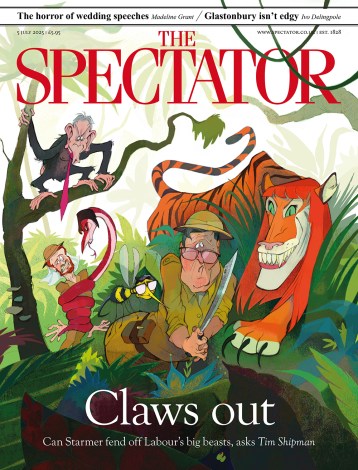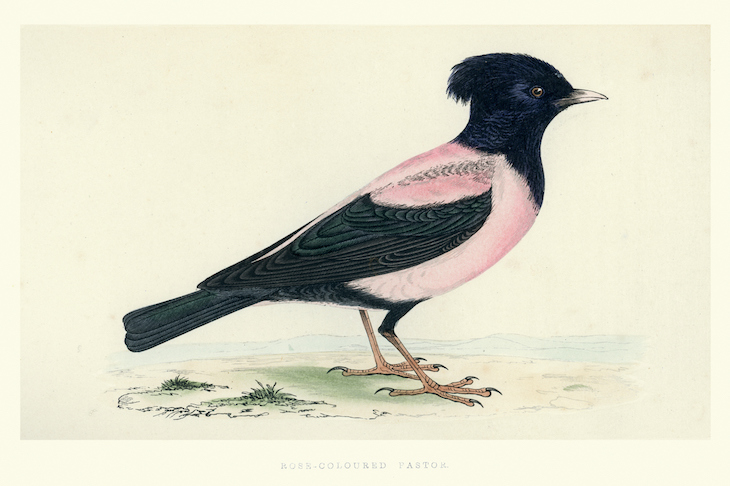If you were to compare Mozart to a bird it wouldn’t be the starling. Possibly the wood thrush or nightingale, with their beautiful, haunting songs; or maybe the lyrebird with its astonishing ear for imitation; or perhaps the composer would find his match in the exotic rarity of the ivory-billed woodpecker or giant ibis. But the common starling? More pest than pet in its adoptive North American home, this ‘ubiquitous, non-native, invasive species’ seems an unlikely fit for a singular prodigy.
So thought the ecophilosopher and naturalist Lyanda Lynn Haupt, when she started work on this book, exploring the composer’s relationship with the bird he bought after hearing it singing one of his piano concertos, and kept as a pet until its death. But, like the darting, circling flight of the starling itself, Haupt’s narrative doesn’t quite take her in the direction she expected. What starts as a contrast between genius and the everyday, singularity and ubiquity, musical sophistication and raw expressive instinct, becomes by the end a twin portrait of two equally extraordinary creatures.
Having alighted on Mozart and his starling as a topic, Haupt quickly comes to a rather unusual conclusion. If she is to ‘truly understand what it meant for Mozart to live with a starling’ she would have herself to welcome a feathery intruder into her home and family. Enter her rescued baby starling, Carmen, heroine of the personal memoir that provides a fascinating improvised counter-melody and descant to Mozart’s official history.
The story of Mozart’s starling (whose name remains unknown, but whom Haupt here nicknames ‘Star’) might have died with the composer had it not been for one page in his pocket notebook. Directly beneath an entry recording the amount paid for Star are scribbled two lines of music. The first is a theme from Mozart’s Piano Concerto in G major; the second is a near variation on it — different in only two minor details. This second was the song the composer overheard the bird singing in a shop. The similarity wouldn’t be remarkable, except for the fact that the concerto wasn’t officially premiered until some time later.
Haupt resists the urge to solve the mystery, instead offering a variety of plausible and possible answers to the story and its causality. What interests her much more than a musical whodunnit is the relationship that would develop between composer and bird during their three-year cohabitation — a period in which Mozart composed some eight piano concertos, three symphonies and The Marriage of Figaro. Drawing on her own experiences with Carmen, Haupt imagines the roles this mischievous, curious, intensely social creature might have fulfilled, serving as ‘companion, distraction, consolation and muse’ to its celebrated owner.
Most striking is her analysis of Mozart’s A Musical Joke — a four-movement divertissement conventionally dismissed by musicologists, thought to parody the ineptitudes and infelicities of inferior composers. Haupt invites us to revisit this minor work with new ears, to see its wild cadenza and seemingly nonsensical flights of fancy as, rather, the mere illusion of chaos — a playful musical tribute to the tiny fellow composer who shared his home.
But, whatever its influence, Mozart’s pet could hardly sustain a whole book. Instead, Haupt uses Star as a jumping-off point to discuss broader questions. The influence of philosophy on our changing attitude towards animals; the Music of the Spheres; Chomsky’s theories of language; ornithology: all these ideas have cameo roles, offering thoughtful (and always readable) context to Star and his species as a whole. Far from being the reviled villain of the opening, the starling is revealed by the end as an unusually bright and characterful creature, one whose collective menace is more than matched by its individual attractions.
But, just as Carmen inserted herself into the daily life and routine of Haupt’s household, so this talkative, star-scattered, oil-slick of a bird, a mere 8.5 inches long, perches herself at the very centre of her book. The minutiae of living with a wild creature — the dangers (cats, radiators, drawing pins) the noises (Bluegrass, Bach and domestic appliances are favourite sources for imitation) and, above all, the ever-present ‘poop’ (in Haupt’s unapologetically American style) — make for surprisingly intriguing and delightful reading.
Early on in Mozart’s Starling Haupt introduces her reader to the concept of ‘gaping’ — the unique method by which starlings explore their environment. Where some creatures experience it by eye, others through a sense of smell, starlings see the world through their beaks —not simply pecking, but inserting them into objects, then opening them wide in an attempt to unlock or excavate their secrets.
In a similar way, Haupt’s book inserts a curious beak into this tiny episode in Mozart’s life and uses it as a point of entry, filling the gaps in history, philosophy, music theory and ornithology with her curiosity and wide-ranging intelligence in order to tell a new and charming story.






Comments